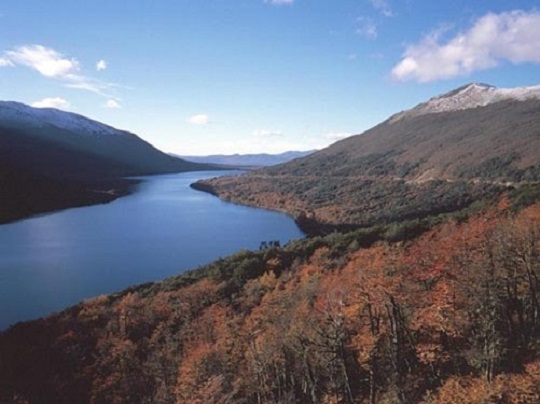Tours
TOURISM HIGHLIGHTS
La Boca
-
Caminito
Located in La Boca, the Caminito (little path, in Spanish) is a street museum comprising colourful painted houses typical of the immigrant dwellings that came to chracterize the port area towards the end of the 19th century.
The Caminito followed the route of an old stream that once flowed into the Riachuelo, and later, after the river dried up, formed part of the route of a railroad. After the closure of the railroad, the street was abandoned, until in the 1950s, a group of neighbours decided to regenerate the area and local artist Benito Quinquela Martín began using the buildings as a canvas.
Today, there are several works by Argentine artists incorporated as part of the street museum and the Caminito has become a favourite with visitors to the city. Several restaurants offer tango and folk dance shows.
The buildings made of wood and sheet metal are typical of the conventillos, precarious, comunal dwellings built by Genoan immigrants in the 19th century. Many dwellings are built on raised foundations due to frequent floodings in the past.
-
Boca Juniors' legendary "chocolate box" Bombonera soccer stadium.
Located in La Boca, the Caminito (little path, in Spanish) is a street museum comprising colourful painted houses typical of the immigrant dwellings that came to chracterize the port area towards the end of the 19th century.
The Caminito followed the route of an old stream that once flowed into the Riachuelo, and later, after the river dried up, formed part of the route of a railroad. After the closure of the railroad, the street was abandoned, until in the 1950s, a group of neighbours decided to regenerate the area and local artist Benito Quinquela Martín began using the buildings as a canvas.
Today, there are several works by Argentine artists incorporated as part of the street museum and the Caminito has become a favourite with visitors to the city. Several restaurants offer tango and folk dance shows.
The buildings made of wood and sheet metal are typical of the conventillos, precarious, comunal dwellings built by Genoan immigrants in the 19th century. Many dwellings are built on raised foundations due to frequent floodings in the past.
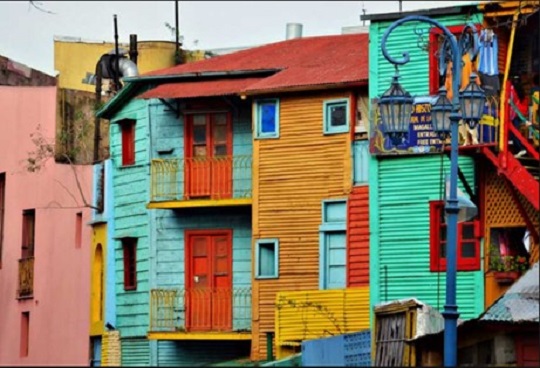
Puerto Madero
At the end of the 19th century, the need to create a port to connect Buenos Aires with Europe, in the context of the boom of the agro-export model, led the engineer Eduardo Madero to present his own project, to whom the neighborhood owes its name.
The renovation of the old port began in 1989 with the Law of State Reform and the creation of the Old Puerto Madero Corporation. Its main objective was to urbanize its 170 hectares and revalue the central area of the City.
This project consisted, on the one hand, in the creation of a narrow strip of construction located between the levees, two large parks, wide boulevards, pedestrian walkways and the construction of a varied number of towers. In addition, in the design of the pedestrian walkway and the headwaters of the dykes, cobblestones and original sleepers were recovered, which give an extra emotional value to the area. They painted and illuminated old strategically located cranes, that evoke the port spirit.
On the other hand, the old merchandise docks were recycled, keeping their exposed brick fronts and their cast iron beams to maintain their historical value. The renovation of these sheds, aligned at regular intervals in front of the water mirrors, granted elegance, prestige and identity to Puerto Madero, with the vaulted form of its recollections and galleries. Today, they house lofts and emblematic buildings with unique views, offices, restaurants, pubs, universities and different works of great architectural quality. In 1996, the second stage of the urbanization plan began, from the sale of plots and, in December of the same year, the Deliberative Council, through Ordinance N ° 26.607, incorporated Puerto Madero as the 47th neighborhood.
From port to district of excellence, this port area became, after decades of inactivity, an international example of urban reconversion. The development of a new relationship between the City and the river, the recycling of its docks, the opening of new streets and boulevards, the inclusion of parks and squares and, above all, the resignification of public space, made this neighborhood one of the most picturesque of Buenos Aires.
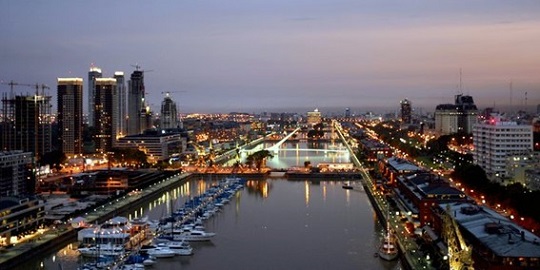
Teatro Colón
The Teatro Colón (Colón Theatre) in Buenos Aires is one of the most important opera houses in the world. Its rich and prestigious history and its exceptional acoustics and architectural features rank it among theatres such as Teatro alla Scala in Milan, the Paris Opera House, the Vienna State Opera, the Royal Opera House in London, and the Metropolitan Opera House in New York.
The Colón operated in its first venue from 1857 until 1888, after which the building was closed for the construction of a new house. The new improved house opened on May 25th 1908 with a performance of Aïda. In the beginning, the theatre recruited opera companies from other countries, but as of 1925 it has had its own permanent companies (orchestra, ballet and choir) and its own production workshops, which have allowed the theatre to organise its own seasons since the 1930s, funded by the city budget. Since then, the Colón renewed its repertoire annually or by stagione, and has been able to set up whole productions on its own because of the professionalism of its specialised stagecraft staff.
Throughout the history of the theatre, no artist of importance of the 20th century has failed to appear on its stage. It's enough to mention singers such as Enrico Caruso, Claudia Muzio, Maria Callas, Régine Crespin, Birgit Nilsson, Plácido Domingo and Luciano Pavarotti, dancers such as Vaslav Nijinski, Margot Fonteyn, Maia Plisetskaia, Rudolf Nureyev, Mijail Barishnikov, and conductors such as Arturo Toscanini, Herbert von Karajan, Héctor Panizza, Ferdinand Leitner, among dozens of others. It is also common for composers to come to the theatre to conduct or supervise the first performances of their productions, a tradition established by Richard Strauss, Camille Saint-Saëns, Pietro Mascagni and Ottorino Respighi.
Many important figures have worked steadily at the theatre to achieve their highest artistic goals, like Erich Kleiber and Fritz Busch, stage directors like Margarita Wallmann and Ernst Poettgen, ballet teachers like Bronislawa Nijinska and Tamara Grigorieva, choral directors like Romano Gandolfi and Tullio Boni, not to mention the many instrumental soloists, symphony orchestras and chamber orchestras who have graced our stage on many unforgettable evenings over more than a hundred years of uninterrupted activity.
Finally, as of the year 2010, the Teatro Colón boasts a building restored to all its original glory, giving an air of distinction to its productions. All these reasons are what make the Teatro Colón a pride of the Argentinian culture and a standard for opera, ballet and classical music across the world.
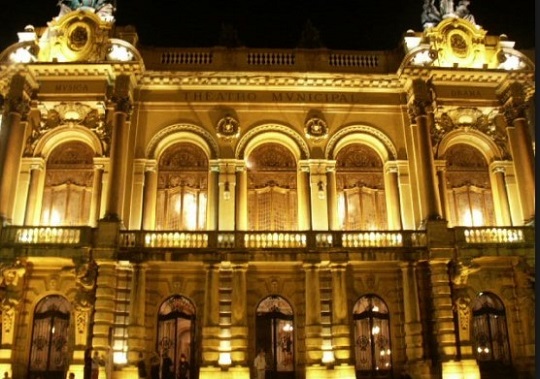
San Telmo
San Telmo is one of the city's oldest and most emblematic neighbourhoods. It still maintains much of its original architecture, with historic mansions, cobbled streets and patios with fountains. You can explore several converted mansions such as the Pasaje Defensa, once the private home of the Ezeiza family, browse for unique items at the many antique shops, catch a tango show, or drink a coffee at a traditional neighbourhood bar.
The neighbourhood has gained a bohemian air thanks to the many artists and musicians in the area, and has a growing gastronomy scene with new restaurants and craft beer houses.
At the heat of San Telmo is the Plaza Dorrego, an old square surrounded by bars. The city's biggest antiques fair takes place here on Sundays, along with the hugely popular market on Defensa street, where you can find everything from antiques to contemporary craft items.
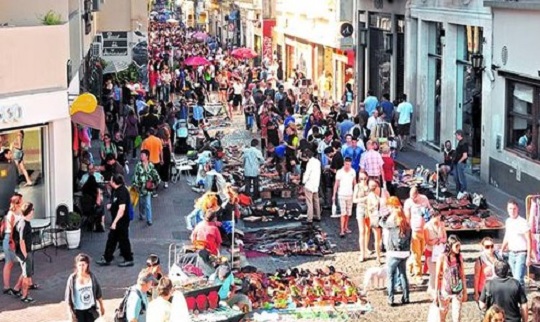
TOURISM IN THE OUTSKIRTS OF THE CITY
Tigre
It is located just north of the city of Buenos Aires. It is an access road to the rivers and swamps of the vast delta of Paraná. The old Puerto de Frutos of the city is now a busy craft market. Nearby is the Museo del Mate, which goes through the history of the traditional Argentine infusion and has a mate bar. Rowing clubs and restaurants line Paseo Victorica, a boardwalk by the river.
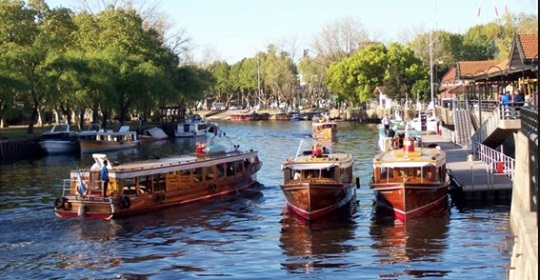
Basílica de Nuestra Señora de Lujan
The Basilica of Our Lady of Luján is erected in the city of Luján, about 70 km west of the Autonomous City of Buenos Aires, in the province of Buenos Aires, Argentina. An imposing monument of faith, typical of the 13th century and one of the most important cases of the neo-Gothic style of Argentina, together with the cathedrals of La Plata and San Isidro and the church of the Capuchins in the city of Córdoba. It is dedicated to Our Lady of Luján, the saint patron of Argentina. For this reason, it is also considered the National Sanctuary of Argentina.
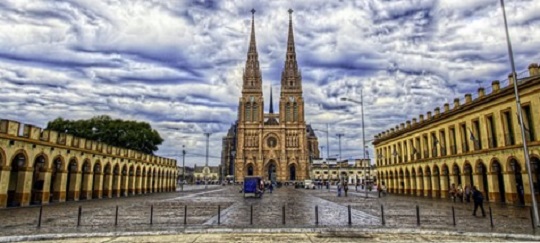
TOURISM IN ARGENTINA
Calafate
This town is located by Argentino Lake, a green water surface that covers 1600 km2 and owns large and mysterious depths due to its glacial origin. El Calafate will connect you to the most unknown and magical of our geography.
El Calafate is 316 km from Río Gallegos 185 meters above sea level, and it is named after the small bush called “calafate”, indigenous of Patagonia. Its fruit is a delicious berry, very used in the elaboration of jam. According to tradition, whoever eats calafate will be back for more. But reality indicates that those who visit El Calafate want to stay forever.
It is an oasis of poplars, willows and pines at the border of the steppe. This town is an important tourist place of national as well as international interest, since here start all glacier circuits. If these are your goal, you can not miss this little village and all the magic nature offers.
El Calafate presents a dry climate, with an average maximum temperature of 19ºC in summer, and an average minimum in winter of -2º. In summer the sun rises at 5.30 a.m. and sets at 11p.m. whereas in winter the day is shorter, there are only 8 hours of light.
“Los Glaciares” National Park covers a surface of some 600.000 hectares with 47 glaciers: Marconi, Viedma, Moyano, Upsala, Agassiz, Bolado, Onelli, Peineta, Spegazzini, Mayo, Ameghino, Moreno and Frías, are some of the most important. In 1981 it has been declared World Natural Heritage by UNESCO.
The International Airport of El Calafate, 23 km from the city center, receives direct flights from Buenos Aires, Bariloche, Ushuaia, Puerto Madryn, Trelew, and Puerto Natales, among other cities.
From the city of El Calafate you will be able to travel all over the region through off road crossing, horse riding and sport fishing, always surrounded by a mountainous landscape. During your stay you will be able to see a large variety of birds, like the condor or the black-chested buzzard eagle, foxes, hares, reptiles and pumas. There are also endangered species: the deer, the Wolffsohn’s viscacha and the torrent duck.
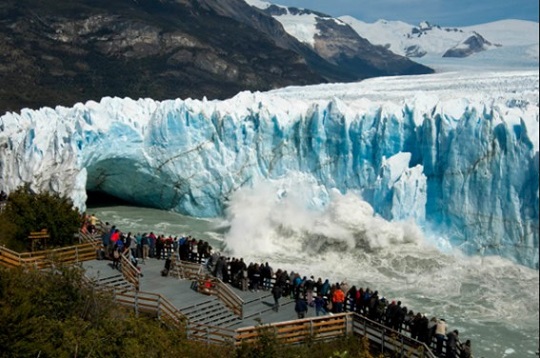
Cataratas de Iguazu
There is an old Guarani legend that goes like this: “Many years ago, the Iguazú River was inhabited by a giant snake known as Boi. Every year the Guarani tribe would sacrifice a beautiful maiden who was thrown into the river as an offering to the serpent. All Guarani tribes were summoned for this ceremony, even the most remote ones. One day, a young cacique named Taroba came to the village, where he met a beautiful maiden called Naipi, who had been already chosen to be sacrificed. Courageously, he kidnapped the girl the night before the sacrifice, as they escaped through the river on a canoe. On founding this out, Boi became so furious that, twisting its back, the serpent split the course of the river and created the falls. As a punishment, Boi turn the young man into the trees that we can see at the upper part of the falls, and it turned the hair of the beautiful Naipi into the waterfalls. After that tragedy, Boi dived into the Devil’s Throat. Today, the monster still watches the lovers, and makes sure that they may never be together again...but in the sunny days, the rainbow overcomes Boi’s evil power and reunites them once more.
All throughout the visit to the National Park Iguazú and the Waterfalls area, the visitor will be able to notice the strong influence that the Guarani culture left, and still remains to this very day. The fascinating tradition and history of this ethnic group punished by the European conquest still remain in this region.
The National Park Iguazú, located on the north of the province of Misiones, Argentine Republic, nowadays covers 66148 hectares. It is situated around the waterfalls where the Iguazú River will do as the border between Argentina and Brazil. A series of 275 cascades and waterfalls separated by the densely wooded rocky islets, and chained along the edge of the cliff, form a 3 km-long semicircle as they lead the fall of the river down to the lower level of the plateau. 80 meters of free fall are sometimes interrupted by ledges or rocks to create clouds and rainbows. The falls become even more splendid for being surrounded by the beauty of the rainforest. The abundant forests where bamboo, palm trees and ferns cover the land with such an intense green that it even seems unbelievable to the eye, make each one of the waterfalls even more gorgeous. Parrots and toucans of brightly colored feathers flutter around among the foliage, the orchids, begonias and other wild flowers.
448 bird species along with 80 mammal’s species and a larger amount of fish, batrachians, reptiles, butterflies and moths have been registered. A must in this water kingdom is to watch the Waterfalls from the very Iguazú River on board the motorboats that sail up to the foot of the falls. There are two tours that will allow you to sail for about 20 minutes along the rapids: in a constant jump, the tourists will come out totally wet by the water of the Falls, and completely revitalized by the emotion and the adventure.
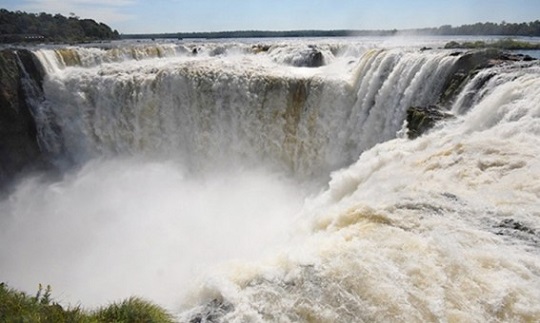
Ushuaia
Ushuaia is the capital of the Province of Tierra del Fuego, Antarctica and South Atlantic Islands. It is located by the Beagle Channel, in a beautiful bay protected from the wind, surrounded by the Martial mountain range. It has a unique landscape in the southernmost part of Argentina; it combines mountains, sea, glaciers and forests. The irregular topography has created an extremely picturesque city that mixes colors and uneven pieces of land, together with the silhouette of the Andes, which stands out against the firmament. Ushuaia is a picturesque city that has a great service infrastructure for tourism: an elegant shopping mall and an increasing social and cultural activity.
It is the uttermost region on Earth, source of inspiration, of challenge, of myths and legends that remain even for those who never walked these lands or navigated the Southern Seas. Ushuaia will give you the chance to discover unexplored virgin territory inviting you to an adventure. Hence, the main activities that may be carried out at this privileged corner of the Earth are related to nature: trekking, horse riding, climb and diving.
In summer, the landscape may be discovered walking, by bus, riding a horse, sailing and even by train; in winter, through cross-country skiing and downhill skiing, and traveling the plains on snowmobiles or on dog sleds. The modern facilities located in gorgeous valleys will guarantee a season to enjoy to all the winter fans. In the city you’ll find the End of the World Museum, the Maritime Museum, the Prison Museum, the Yamana Museum, the Handicrafts Market, the End of the World Train and the Ushuaia Aquarium.
There are two hundred bird species living in the woods, the coasts and the mountains in all Tierra del Fuego. There is a large variety of mammals, such as the Andean Fox, the Rufous-tailed Hawk, the Peregrine Falcon, the South American Sea lion or the Chinstrap Penguin. The weather is unpredictable, in a very same day it may change constantly. There usually are very low temperatures. There are few rainfalls, but the environment remains damp, due to the capacity of the soil to retain water. Because of the latitude where we are, the daylight hours vary a lot in winter and in summer. During the summer we are able to perform longer walks thanks to the fact that there are more daylight hours.
Lured by the particular mystic of its geography and the natural environment, tourists from all over the world come to Ushuaia every year and make of this charming place one of the most popular destinations to spend some different holidays.
